List of personality cults
In this list , sorted by country, personal cults are listed that meet three criteria as established by the historian Reinhard Löhmann :
- Exaggeration of an individual , the circumstances are personalized by the glorification of a personality , ie the construction of a system is not represented as the merit of an epoch but of a person
- Monumentalization of the political leader , who as a genius supposedly achieves achievements that no one else is capable of
- Mythization of the Führer as omniscient, immortal and omnipresent, which is shown in public space in statues, monuments, portraits, street names, etc.
Personality cults during his lifetime
| person | country | ideology | description | Period | |
|---|---|---|---|---|---|

|
Ahmet Zogu (King Zogu I.) |
Republic of Albania Kingdom of Albania |
albanian nationalism | After Zogu was proclaimed king in 1928, he introduced the personality cult in Albania, in which he was staged as the successor to Alexander the Great or Skanderbeg . Among other things, it said: "Long live Ahmet Zogu, the savior of our fatherland, and one may think of Skanderbeg's grandson forever." | 1925-1939 |
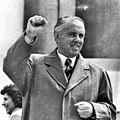
|
Enver Hoxha | People's Socialist Republic of Albania |
Marxism-Leninism Maoism "Albanian Socialism" |
Hoxha cult | 1943-1990 |

|
Gamal Abdel Nasser | Arab Republic of Egypt | Nasserism | As the national icon of Egypt and other Arab countries, Nasser was hyped up by his followers as the “ Saladin ” of pan-Arabism . | 1952-1970 |

|
Husni Mubarak | Arab Republic of Egypt | arab nationalism | The personality cult surrounding Mubarak was mainly carried by the country's elites, who promised themselves privileges and access to state resources by showing their closeness to the president. In the 2000s, however, the Mubaraks family increasingly moved into the center of public awareness; schools, hospitals, foundations and social institutions were named after his wife Suzanne Mubarak , for example . | 1981-2011 |

|
Francisco Macías Nguema | Republic of Equatorial Guinea | no | Macías gave himself the title of "Grand Master of Popular Education, Science and Traditional Culture" and renamed the island of Bioko Masie Ngueme Biyogo Island (after himself). The personality cult around the “only miracle of Equatorial Guinea” (so the official address) was considered unsurpassed even in the leader-focused Africa. The only library in the country only lent out literature by and about Macías. In the schools and churches, slightly offset upwards, Macias pictures hung next to the crucifixes. A national creed was also created, saying "God created Equatorial Guinea at the will of Papa Macias." | 1968-1979 |

|
Teodoro Obiang Nguema Mbasogo | Republic of Equatorial Guinea | no | There is also an extreme cult of personality around Macía's successor, Obiang. The state radio station describes him as the “God of the country with all power over things and people” and “he is in permanent contact with the Almighty” and “can make decisions if he wants to kill without being accountable or going to hell ”. He also awarded himself the title of "Lord of the large island of Bioko , Annobón and Río Muni ". | since 1979 |

|
Juan Perón Evita Perón |
Argentine Republic | Peronism | In the course of Perionism, a cult was created around the presidential couple Perón, for example schools were named after the two and the couple were even shown in school books. The " Myth of Evita " still lives on in Argentina today . | 1946–1955 1973–1974 |
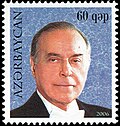
|
Heydər Əliyev | Republic of Azerbaijan | Turkish-Azerbaijani nationalism | Əliyev cult | 1993-2003 |

|
Chiang Kai-shek |
Republic of China Republic of China to Taiwan |
chinese nationalism | In the Republic of China, a personality cult was practiced around the successor Sun Yat-sens Chiang Kai-shek, which then continued after the victory of the communists in Taiwan, so the portrait of Chiang was placed on Tian'anmen Square and later on Taiwan he glorifies in books, printed works and songs, and erected statues of him. | 1925-1975 |

|
Mao Zedong | People's Republic of China | Maoism | Mao cult | 1949-1976 |

|
Walter Ulbricht | German Democratic Republic |
Stalinism Marxism-Leninism |
Ulbricht cult | 1949-1971 |

|
Rafael Leónidas Trujillo Molina | Dominican Republic | no | He awarded himself the title “Benefactor of the Fatherland” and “Father of the New Fatherland”. He had the capital Santo Domingo renamed Ciudad Trujillo (City of Trujillo) after himself . | 1930-1961 |

|
Philippe Pétain | Vichy France | Clerical fascism | The personality cult around Pétain shows that even the state symbols of Vichy France were adapted to it, so the Francisque was created, consisting of the Marshal's baton Pétains and two lictors- axes, the song “ Maréchal, nous voilà ” became the unofficial national anthem after the Marseillaise played. Furthermore, for example, the Our Father was rewritten in a church magazine in his person and the French clergy actively supported him, the Bishop of Tarbes even compared him with the Star of Bethlehem , which would show France the way. In addition, his portrait was displayed in every town hall instead of the French national figure Marianne , as well as coins, postage stamps and other utensils with his portrait. Vichy developed into a political place of pilgrimage around him. He was referred to as "Our Father", "Our Marshal" or "Father of all the children of France". | 1940-1944 |

|
Adolf Hitler | German Empire | National Socialism | Hitler cult | 1933-1945 |

|
François Duvalier ("Papa Doc") | Republic of Haiti | no | Duvalier had a pronounced personality cult around himself, which he combined with the voodoo belief, so he called himself Baron Samedi . | 1957-1971 |
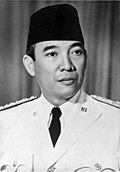
|
Sukarno | Republic of Indonesia | Nasakom | In 1963 Sukarno was appointed president for life, his ideological writings on Nasakom had to be taught in schools and universities everywhere, and the media were also encouraged to constantly spread his political messages. The city of Sukarnopura and the mountain Puntjak Sukarno were renamed after him. | 1945-1967 |
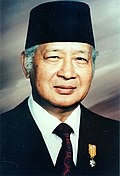
|
Suharto | Republic of Indonesia | Orde Baru | Sukarno's successor, Suharto, also had a personality cult; his military past was glorified and he was given the title of “father of development”. | 1967-1998 |

|
Ruhollah Khomeini | Islamic Republic of Iran | Islamism | Khomeini enjoys sacred veneration and is even mentioned in the first article of the Iranian constitution. Among other things, he was referred to as "Our Holy Imam" or as the "soul" who "made the Iranian people free". | since 1979 |

|
Saddam Hussein | Republic of Iraq | Baathism | Hussein had portraits, statues and posters of himself circulated throughout Iraq, which were posted in schools, public buildings and places. Numerous streets, squares, districts, museums, bridges and the international airport also bore his name. | 1979-2003 |

|
Benito Mussolini | Kingdom of Italy | Italian fascism | Mussolini cult | 1922-1943 |
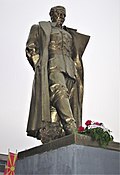
|
Josip Broz Tito | Socialist Federal Republic of Yugoslavia | Titoism | Tito cult | 1945–1980 |

|
Nursultan Nazarbayev | Republic of Kazakhstan | no | All over the country portraits "adorn" Nazarbayev's cities and highways, he can be seen on television every evening and the capital's university bears his name. | since 1990 |

|
Mobutu Sese Seko | Democratic Republic of the Congo / Zaire | no | Mobutu cult | 1965-1997 |

|
Fidel Castro | Republic of Cuba | Castroism / Marxism-Leninism | Castro cult | since 1959 |

|
Antanas Smetona | Republic of Lithuania | Lithuanian nationalism | Smetona drew a picture of himself as a philosopher king who would rule through wisdom, from 1934 he was also celebrated as a fighter for an independent Lithuania and the national founding myth of Lithuania was closely linked to his person. | 1919-1940 |

|
Muammar al-Gaddafi | Great Socialist Libyan Arab People's Jamahiriya | Arab socialism | Although Gaddafi was actually hostile to the personality cult that was practiced around him, he nevertheless tolerated that his likeness was spread throughout his country. His image was even found on everyday objects such as school bags and watches. | 1969-2011 |

|
Hastings Kamuzu Banda | Republic of Malawi | no | He was referred to as "Ngwazi" ( Chichewa : "Savior") and transfigured into a god-like idol. | 1963-1994 |

|
Chorloogiin Tschoibalsan | Mongolian People's Republic | Stalinism | Tschoibalsan practiced a personality cult based on Stalin, after his death he was embalmed and buried in a mausoleum in the capital Ulaanbaatar . The eastern Mongolian city of Choibalsan still bears his name and his monument stands in front of the University of Ulan Bator. | 1932-1952 |
 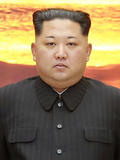
|
Kim Il-sung Kim Jong-il Kim Jong-un |
North Korea | Stalinism / Juche ideology | Cult for the Kim family | since 1948 |

|
Ferdinand Marcos | Republic of the Philippines | no | 1965-1986 | |
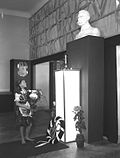
|
Józef Piłsudski | Second Polish Republic | Sanacja | In the Polish interwar period, General Piłsudski was cultivated by the state media of the time, so his military past was glorified and he was called a political visionary. | 1918–1944, since 1989 |
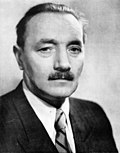
|
Bolesław Bierut | People's Republic of Poland | Stalinism | Bierut practiced a personality cult based on Stalin around himself. | 1947-1956 |

|
Gheorghe Gheorghiu-Dej | People's Republic of Romania | Stalinism / Marxism-Leninism | Today's industrial city Oneşti was named after him in March 1965 , which was then on the drawing board for the chemical industry, among other things. After his death he was buried in a mausoleum in Parcul Carol . | 1945-1965 |

|
Nicolae Ceaușescu Elena Ceaușescu |
Socialist Republic of Romania | Marxism-Leninism / Neo-Stalinism | Ceaușescu cult | 1965-1990 |

|
Wladimir Putin | Russia | Russian nationalism | A personality cult reminiscent of Soviet times is practiced around President Putin, both on the part of the state and on private initiative. | 2000–2008, since 2012 |

|
Robert Mugabe | Republic of Zimbabwe | State capitalism | Mugabe cult | since 1987 |

|
Siad Barre | Democratic Republic of Somalia | " Somali-style socialism " | "Orientation centers" were set up across the country, where much of public life would take place and enthusiasm for the revolution would be cultivated. Barre was stylized as the “father” of the Somali nation and, in part, a “new trinity ” of Marx , Lenin and Barre. | 1969-1991 |

|
Joseph Stalin | Soviet Union | Stalinism | Stalin cult | 1927-1953 |

|
Leonid Ilyich Brezhnev | Soviet Union | Neostalinism | Under Brezhnev there was again a certain personality cult in the USSR, although he never assumed the proportions of Stalin; Brezhnev's obsessions with titles and medals that he regularly awarded himself should be emphasized here. From 1982 to 1988 the Russian city of Naberezhnye Chelny was called Brezhnev . | 1964-1982 |

|
Francisco Franco | Kingdom of Spain | Franquism | Franco styled himself as a kind of king of Spain, so he wore military uniforms that had previously worn the Spanish monarchs, lived in the Palacio Real (El Pardo) and gave himself the title “By God's grace, leader of Spain”. | 1936-1975 |

|
Nelson Mandela | Republic of South Africa | no | Since the election victory in 1994, a personality cult has arisen around Mandela, also outside of South Africa, which he has always been very critical of. He was called a “political magician”, “South African wonder”, “black fairy tale hero from Cape”, “icon of the 20th century”, “political figure of light” and, after his resignation, a “retired myth”. In addition, numerous statues and busts were erected worldwide, and streets and squares were named after him. | since 1994 |
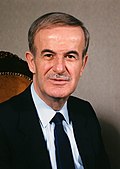 
|
Hafiz al-Assad Bashar al-Assad |
Syrian Arab Republic | Baathism | Bronze statues of Hafez al-Assad are placed in central public squares in the larger cities; Posters with his portrait on the house facade and in every public and private environment were ubiquitous. The posters have meanwhile been replaced by those showing pictures of his son. | since 1970 |

|
Plaek Phibunsongkhram | Siam / Kingdom of Thailand | Volkish nationalism | Phibun cult | 1938-1944 1948-1957 |

|
Bhumibol Adulyadej | Kingdom of Thailand | no | Larger-than-life portraits of Bhumibol were displayed across the country. Since the military coup in May 2014, the cult of personality has increased and the draconian laws on lese majesty have been increasingly applied. Anyone who insults or criticizes members of the royal family risks long prison sentences. | 1946-2016 |

|
Klement Gottwald | Czechoslovak Republic | Stalinism | Gottwald cult | 1948-1953 |

|
Gnassingbé Eyadéma | Republic of Togo | no | Eyadéma had a pronounced personality cult around itself, so the state radio stations played the jingle three times a day: “Be assured Eyadéma, you have been crowned by God! Be assured Eyadéma, the people are behind you! ”There is a bronze statue of him in the capital Lomé . | 1967-2005 |

|
Zine el-Abidine Ben Ali ( Leïla Ben Ali ) |
Republic of Tunisia | no | First of all, Ben Ali had a cult around the number seven , as he had taken power in Tunisia on November 7th. After a while, however, Ben Ali himself increasingly became the focus of veneration, especially his wife Leïla promoted the personality cult around herself and her husband. School books were provided with the pictures of the presidential couple, children had to learn the Ben Alis' speeches by heart, there was constant homage in the media, large-scale images were distributed everywhere and even houses were painted purple, the color of the state party. | 1987-2011 |

|
Mustafa Kemal Ataturk | Republic of Turkey | Kemalism | Ataturk cult | since 1923 |
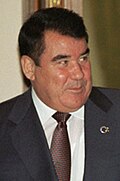
|
Saparmyrat Niyazov | Turkmenistan | Turkmen nationalism | Nyýazow cult | 1992-2006 |

|
Idi Amin | Republic of Uganda | no | Amin called himself "President for life, Field Marshal Al Hajj Doctor Idi Amin Dada, Lord of the Animals of the Earth and the Fish in the Sea, King of Scots and Conqueror of the British Empire in Africa" and had his uniform jacket extended to make room for him "Victorious Cross" medal, which he had made at a London jeweler and which he pinned to his lapel. He also renamed the Eduardsee after himself in Idi-Amin-Dada-See . | 1971-1979 |
| Mátyás Rákosi | People's Republic of Hungary | Stalinism | Rákosi's personality cult was strongly based on Stalin, so numerous cities, companies, schools and universities bore his name. | 1949-1956 | |

|
Hugo Chavez | Bolivarian Republic of Venezuela | Bolivarianism | Chavez cult | since 1999 |
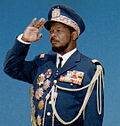
|
Jean-Bédel Bokassa (Emperor Bokassa I) |
Central African Republic Central African Empire |
no | He initially declared himself president for life, before he crowned himself Emperor Bokassa I in 1977, following his example, Napoleon Bonaparte . He was always omnipresent in the capital Bangui , many streets, a university and a sports palace bore his name. | 1966-1979 |
Postmortem personality cults
| person | country | ideology | description | Period | |
|---|---|---|---|---|---|

|
Georgi Dimitrov | People's Republic of Bulgaria | Marxism-Leninism | Dimitrov cult | 1949-1990 |

|
Otto von Bismarck | The German Imperium | German nationalism | Bismarck cult | 1890-1918 |
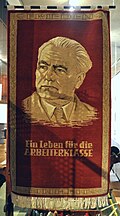
|
Wilhelm Pieck | German Democratic Republic |
Stalinism Marxism-Leninism |
The personality cult around the "workers' president" Pieck already existed during his lifetime, so he was referred to as "Papa Pieck" and homage to him as the father of the country. See: Pieck cult | 1949-1990 |

|
Ernst Thalmann | German Democratic Republic |
Stalinism Marxism-Leninism |
Thälmann cult | 1949-1990 |
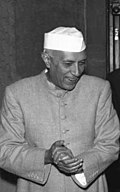
|
Jawaharlal Nehru | Republic of India | moderate socialism | Due to the dominance of the Nehru Gandhi family in the Congress Party , a certain cult was built up around Nehru. | 1947-1964 |

|
Che Guevara | Republic of Cuba | Castroism / Marxism-Leninism | Guevara cult | since 1967 |
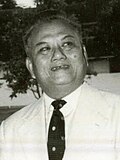
|
Kaysone Phomvihane | Laos People's Democratic Republic | Marxism-Leninism | After Phomvihane's death in 1991, the CP LRVP established a personality cult around him as the founding father of the party and state, and since then there has been a memorial to him in every district capital. | since 1991 |

|
Ion Antonescu | Romania | no | Post-socialist Antonescu cult | since 1991 |

|
Andrej Hlinka | Slovak state | Clerical fascism | When Hlinka's party, together with his former deputy Jozef Tiso, took power in Slovakia in 1938 after his death and the latter declared itself independent under pressure from the Third Reich on March 14, 1939 , Hlinka became the cult figure of the new regime: an order was named after it him and created two mass organizations that bore his name, the Hlinka Guard ( Hlinkova garda ), an imitation of the SS , and the Hlinka Youth ( Hlinkova mládež ), an imitation of the Hitler Youth . | 1938-1945 |

|
Vladimir Ilyich Lenin | Soviet Union |
Stalinism Marxism-Leninism |
Lenin cult | 1924-1991 |

|
George Washington | United States of America | no | Washington cult | since 1799 |
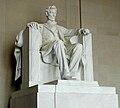
|
Abraham Lincoln | United States of America | no | Lincoln cult | since 1865 |

|
John F. Kennedy | United States of America | no | Kennedy myth | since 1963 |

|
Hồ Chi Minh | Socialist Republic of Vietnam | Marxism-Leninism | Hồ Chí Minh cult | since 1945 |
Individual evidence
- ↑ Reinhard Löhmann : The Stalin myth. Studies on the social history of the personality cult in the Soviet Union (1929-1935) , LIT, Münster 1990, ISBN 3-88660-596-5 , p. 10 ff.
- ↑ Oliver Jens Schmitt: The Albanians. CHBeck, 2012, ISBN 978-3-406-63031-6 , p. 158 ( limited preview in Google book search).
- ^ Marie-Janine Calic: Southeast Europe. CHBeck, 2016, ISBN 978-3-406-69831-6 ( limited preview in Google book search).
- ↑ Immanuel Ness, Zak Cope: The Palgrave Encyclopedia of Imperialism and Anti-Imperialism . Springer, 2016, ISBN 978-0-230-39278-6 , pp. 176 ( preview in Google Book search).
- ↑ Thomas Kunze , Thomas Vogel (ed.): Oh you, beloved guide. Personality cult in the 20th and 21st centuries. Ch. Links , Berlin 2013, ISBN 978-3-86153-734-2 , pp. 233-234.
- ↑ Rashid Suleiman: Macias Nguema: Ruthless and bloody dictator ( Memento of March 13, 2016 in the Internet Archive ) of August 6, 2008.
- ^ Equatorial Guinea: Modern Caligula . In: Der Spiegel . No. 53 , 1976, p. 67-69 ( Online - Dec. 27, 1976 ).
- ↑ Equatorial Guinea's “God”. In: BBC News . July 26, 2003, accessed March 24, 2019 .
- ↑ MSN News South Africa: Africa's Worst Dictators: Teodoro Obiang Nguema Mbasogo. In: MSN News South Africa. September 28, 2010, archived from the original on October 21, 2010 ; accessed on March 24, 2019 (English).
- ^ Mónica Esti Rein: Politics and Education in Argentina, 1946-1962. ME Sharpe, 1997, ISBN 978-0-7656-0209-1 , p. 80 ( limited preview in Google book search).
- ↑ Charles Sowerwine: France since 1870. Culture, Society and the Making of the Republic. Pelgrave Macmillan, London 2001/2009, pp. 190/191.
- ↑ Erich Follath and Christian Neef: The Nazarbayev brand . In: Der Spiegel . No. 40 , 2010, p. 130-136 ( Online - Oct. 4, 2010 ).
- ↑ Ennker, Benno; Heidi Hein-Kircher (Ed.): Der Führer im Europa des 20. Jahrhundert , Verlag Herder-Institut, Marburg 2010, pp. 111-136.
- ↑ Heiko Meinhardt: Malawi: History and State. In: LIPortal , the country information portal .
- ↑ MBB Biskupski: Independence Day: Myth, Symbol, and the Creation of Modern Poland . Oxford University Press, 2012, ISBN 978-0-19-965881-7 .
- ^ Paul N. Hahn: A Low, Dishonest Decade: The Great Powers, Eastern Europe, and the Economic Origins of World War II, 1930-1941 . Continuum, 2002, ISBN 978-0-8264-1449-6 .
- ^ Paweł Kusiak: Legenda i kult J. Piłsudskiego. Jak w Polsce doby integracji europejskiej interpretować postać Marszałka? . In: Colloquium Wydziału Nauk Humanistycznych i Społecznych AMW . 2, 2010, pp. 241-258.
- ↑ Stephen J. Lee: European Dictatorships, 1918-1945 . Routledge, 2012, ISBN 978-1-135-69011-3 .
- ^ Rafal Pankowski: The Populist Radical Right in Poland: The Patriots . Routledge, Abingdon and New York, NY 2010, ISBN 978-0-415-47353-8 .
- ^ Eva Plach: The Clash of Moral Nations: Cultural Politics in Piłsudski's Poland, 1926-1935 . Ohio University Press, 2006, ISBN 978-0-8214-1695-2 .
- ^ Piotr J. Wróbel: The Rise and Fall of Partliamentary Democracy in Interwar Poland . In: In MBB Biskupski, James S. Pula and Piotr J. Wróbel, eds., The Origins of Modern Polish Democracy , pp. 110-164 . Ohio University Press, 2010, ISBN 978-0-8214-4309-5 .
- ↑ Julie A. Cassiday and Emily D. Johnson: Putin, Putiniana and the Question of a Post-Soviet Cult of Personality . In: The Slavonic and East European Review 88, No. 4 (2010), pp. 681-707; Ilya Koval: Gaius Julius Putin . In: zeit.de , May 15, 2015, accessed April 17, 2017.
- ↑ Besteman 1999 (pp. 13-14)
- ↑ http://oldgazette.ru/kopravda/21021978/01-1.html
- ↑ Irmgard Fuchs: Depth Psychology and Revolte. Königshausen & Neumann, 2005, ISBN 978-3-8260-2908-0 , p. 288 ( limited preview in the Google book search).
- ↑ Thailand's king treated for "serious blood infection". In: news.orf.at. September 3, 2016, accessed October 22, 2017 .
- ↑ Toughs at the top. Self-obsessed despots are out of fashion in most places, but not in North Korea, Turkmenistan and Togo. In: The Economist . December 16, 2004, accessed March 24, 2019 .
- ↑ Thomas Kunze , Thomas Vogel (ed.): Oh you, beloved guide. Personality cult in the 20th and 21st centuries. Ch. Links , Berlin 2013, ISBN 978-3-86153-734-2 , pp. 234-235.
- ↑ Hans Christoph book: Africa: The bloody antics of Idi Amin. In: welt.de . March 13, 2007, accessed October 7, 2018 .
- ↑ Thomas Kunze , Thomas Vogel (ed.): Oh you, beloved guide. Personality cult in the 20th and 21st centuries. Ch. Links , Berlin 2013, ISBN 978-3-86153-734-2 , pp. 274-283.
- ↑ Thomas Kunze , Thomas Vogel (ed.): Oh you, beloved guide. Personality cult in the 20th and 21st centuries. Ch.links , Berlin 2013, ISBN 978-3-86153-734-2 , p. 139.
- ↑ Zareer Masani: Chacha's Musty Coat-Tails. Nehru cost India 50 years of growth. His legacy is a petty dynasty. In: Outlook India Magazine. November 17, 2014, accessed March 24, 2019 .
- ↑ Jan Düker: Laos: The North. Dumont Reiseverlag, 2016, ISBN 978-3-616-40744-9 ( limited preview in Google book search).